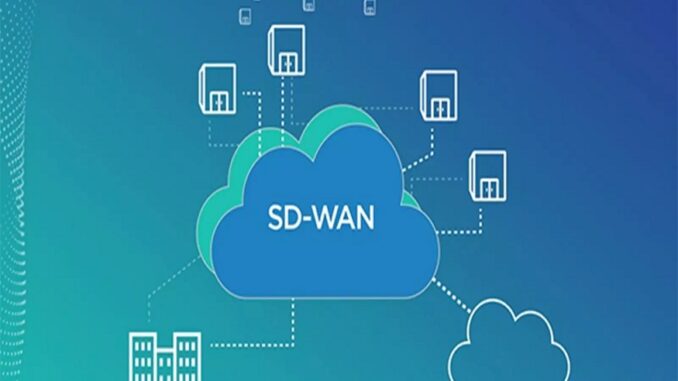
As digital transformation reshapes the business landscape, IT leaders are rethinking their approach to branch connectivity. Two emerging solutions, SD-WAN and SD-Branch, offer compelling benefits—but what sets them apart? Let’s demystify the key differences between these software-defined architectures and explore how they enable agile, secure, and managed SD Branch networks.
What is SD-WAN? Architecture and Core Capabilities
SD-WAN (Software-Defined Wide Area Network) is a virtualised approach to managing enterprise WAN connectivity. It creates an overlay network on top of existing transport services (MPLS, broadband internet, LTE), abstracting the underlying physical infrastructure.
Key characteristics of SD-WAN include:
- Centralised Orchestration: All WAN policies and routing are managed via a cloud-based controller.
- Dynamic Path Selection: Traffic is intelligently steered across the best-performing link based on real-time conditions.
- Transport-Agnostic: Supports MPLS, internet, and wireless links, allowing enterprises to mix and match for cost and redundancy.
- Application Awareness:Prioritises critical applications and optimises performance based on business needs.
The primary focus of SD-WAN is connecting branch offices to data centers and cloud platforms over a resilient, cost-effective SD WAN network. It simplifies WAN management, boosts application performance, and reduces MPLS dependency.
SD-Branch: Taking SD-WAN to the Next Level
SD-Branch builds on SD-WAN principles by extending software-defined intelligence to the entire branch network stack. While SD-WAN optimises the WAN “pipe”, SD-Branch unifies control over LAN switching, WLAN, security, and IoT infrastructure within the branch.
An SD-Branch solution offers:
- Integrated Network Functions: Combines SD-WAN, LAN, WLAN, and security capabilities in a unified platform.
- Centralised Orchestration: Enables IT to provision, monitor, and troubleshoot all branch elements via a single dashboard.
- Zero-Touch Provisioning: Automates device onboarding and configuration, minimising on-site IT interventions.
- Embedded Security: Integrates next-gen firewalls, segmentation, and cloud-delivered security, deeply aligned with network policies.
By consolidating the branch network stack, SD-Branch eliminates management complexity, strengthens security posture, and accelerates branch rollouts—making it ideal for distributed enterprises with hundreds or thousands of locations.
SD-WAN vs SD-Branch: A Clear Comparison
While SD-WAN focuses on optimising WAN transport, SD-Branch is a superset that brings SD-WAN together with LAN, WLAN, and security—enabling end-to-end automation and agility across all branch network functions. Other key differences include:
| Dimension | SD-WAN | SD-Branch |
| Scope | WAN (site-to-site, site-to-cloud) | WAN + LAN + WLAN + Security |
| Primary Use Case | Connecting branches to data centers & cloud | Enabling full-stack branch transformation |
| Management Model | Centralised orchestration of WAN | Centralised orchestration of entire branch |
| Security Capabilities | Basic (VPN, firewall) | Deeply integrated (NGFW, segmentation) |
| Deployment Options | Appliances or VNFs at WAN edge | All-in-one branch gateways |
| Ideal for | Organisations with WAN cost/performance issues | Organisations needing holistic branch modernisation |
The Business Impact: Why Enterprises are Embracing SD-Branch
For distributed enterprises, SD-Branch offers compelling advantages over traditional branch architectures:
- Faster Deployment: Zero-touch provisioning enables new branches to be spun up in hours or days, not weeks or months.
- Simplified Operations: Single-pane-of-glass management eliminates swivel-chair administration and reduces troubleshooting time.
- Enhanced Security: Integrated defenses like firewalls, IPS, and segmentation protect against evolving threats.
- Cloud-Centric Agility: Cloud-managed platforms support elastic scale and rapid rollout of new branch services.
- Cost Savings:Centralised policy control and automated operations lower CapEx and OpEx versus legacy branch networks.
These benefits make SD-Branch a powerful enabler for retail, healthcare, finance, and other verticals with widely distributed operations. By converging network and security functions, SD-Branch equips IT teams to drive digital initiatives at the edge with greater speed, efficiency, and control.
Managed SD-Branch: The Path to Simplified Deployment
For many enterprises, the quickest path to SD-Branch adoption is through a managed service provider. Managed SD Branch offerings deliver the full stack of branch networking and security capabilities “as-a-service”, with the provider handling design, implementation, monitoring, and support.
Advantages of a managed SD-Branch model include:
- Faster Time-to-Value: Leverage provider expertise and pre-integrated solutions to accelerate deployment.
- Reduced Complexity: Offload day-to-day management, freeing up IT staff for strategic initiatives.
- SLA-Backed Performance: Gain end-to-end visibility and provider-guaranteeduptime for mission-critical branch services.
- Security and Compliance: Ensure consistent policy enforcement and regulatory alignment across all locations.
- Flexible Consumption: Migrate CapEx to OpEx with subscription-based pricing models aligned to business needs.
With a managed SD Branch approach, enterprises can quickly realise the agility, efficiency, and security benefits of SD Branch—without the operational overhead of a DIY deployment.
Embarking on Your SD-Branch Journey
As you evaluate SD-WAN and SD-Branch options, consider these key steps:
- Assess Your Branch Network Goals: Identify pain points, digital initiatives, and IT resource constraints that SD-Branch can address.
- Evaluate Managed Service Options: Explore providers that offer comprehensive SD-Branch solutions with flexible deployment models and proven industry expertise.
- Define Success Metrics: Establish clear KPIs around application performance, security posture, and operational efficiency to measure SD-Branch ROI.
- Plan Your Rollout Strategy: Determine pilot sites, migration timelines, and training needs to ensure a smooth transition to the new architecture.
By aligning SD-Branch initiatives with strategic business priorities, IT leaders can lay the foundation for a more agile, automated, and secure branch network.
Looking for a trusted partner to guide your SD-Branch journey? Airtel’s Managed SD Branch solution brings together best-in-class networking and security capabilities, enabling you to accelerate branch transformation while maximising IT efficiency. With Airtel’s expertise and end-to-end support, you can confidently modernise your branch infrastructure and drive digital innovation at the edge.

Leave a Reply
You must be logged in to post a comment.